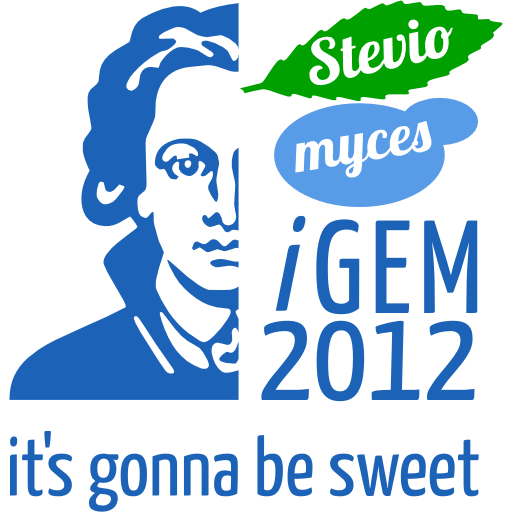Team:Frankfurt/Project
From 2012.igem.org
| Line 4: | Line 4: | ||
!align="center"|[[Team:Frankfurt/Team|Team]] | !align="center"|[[Team:Frankfurt/Team|Team]] | ||
!align="center"|[[Team:Frankfurt/Project|Project]] | !align="center"|[[Team:Frankfurt/Project|Project]] | ||
| + | !align="center"|[[Team:Frankfurt/Notebook|Notebook]] | ||
!align="center"|[[Team:Frankfurt/Parts|Registered Parts]] | !align="center"|[[Team:Frankfurt/Parts|Registered Parts]] | ||
!align="center"|[[Team:Frankfurt/Modeling|Modeling]] | !align="center"|[[Team:Frankfurt/Modeling|Modeling]] | ||
| - | |||
!align="center"|[[Team:Frankfurt/Safety|Safety]] | !align="center"|[[Team:Frankfurt/Safety|Safety]] | ||
!align="center"|[[Team:Frankfurt/Attributions|Attributions]] | !align="center"|[[Team:Frankfurt/Attributions|Attributions]] | ||
!align="center"|[https://igem.org/Team.cgi?year=2012&team_name=Frankfurt Official Team Profile] | !align="center"|[https://igem.org/Team.cgi?year=2012&team_name=Frankfurt Official Team Profile] | ||
|} | |} | ||
| - | |||
Revision as of 10:14, 13 September 2012
| Home | Team | Project | Notebook | Registered Parts | Modeling | Safety | Attributions | Official Team Profile |
|---|
Contents |
Our project aims for this years competition
The sweetening agents produced by Stevia rebaudiana are all derived from the common precursor steviol which belongs to the diverse group of isoprenoids (also called terpenes). The term isoprenoid indicates that these compounts can theoretically be decomposed into units of the compound isoprene (2-methylbuta-1,3-dien). A diterpene like steviol is composed of four isopren units. All diterpenes in cell metabolism are derived from geranylgeranyl pyrophosphate (which is a diterpene itself). The synthesis of Steviol is the aim for our participation in the iGEM 2012 competition. At least we want to introduce the necessary gens into our host organism Saccharomyces cerevisiae. To reach this goal one part of the project is the icrease of the mevalonate pathway activity.
The steviol precursor metabolism in yeast
It is known from literature that yeast produces some Mono- Sesqui- and Diterpenes in very small amounts and so possess a functional isoprenoid pathway. There are two known pathways for the production of isoprenyl pyrophosphate in nature. Isoprenyl pyrophosphate is converted into all the diverse isoprenoid compounts by condensing several units together. In bacteria and plastides isoprenyl pyrophosphate is produced via the methylerytritol pyrophosphate way (MEP) while it is produced via the mevalonate pathway (MVA) in eukaryotes. Many plants including stevia have crosslinks between the plastidic and the cytosolic pathway and produce the majority of isoprenoid compounts via the MEP Pathway though they are eukaryotic organisms.
In yeast only the mevalonate pathway is present. The compound chiefly produced by yeast (from the isoprenoid family) is Squalene. This is a triterpene from which the sterols (like cholesterol and ergosterol) are derived. Those compounds are essential for propagation because they control the membrane fluidity. Yeast with a corrupted sterol production is not able to grow unless ergosterol is present in the medium. Geranylgeranyl pyrophosphate is only produced in small amounts since yeast only uses it for very special purposes like the modification of proteins. We suppose that a proper function of the steviol producing pathway in yeast will only be possible when the flow of the mevalonate pathway is redirected to geranylgeranyl pyrophosphate without disturbing the production of squalene.
The early gibberelline pathway for the production of steviol
The generation of Steviol from Geranylgeranyl Pyrophosphate takes place via four reactions.
The first two steps imply the double cyclization of Geranylgeranyl Pyrophosphate. In the first reaction ent-Copalyl Pyrophosphate is formed (induced by the protonation of a double bond, for that reason called proton-induced cyclization). The second reaction step leads to ent-Kaurene (induced by dephosphorylation, which leaves a positive charge that acts as electrophile and attacks another double bond).
The following two reactions imply the Oxidation of ent-Kaurene. The third reaction implies the Oxidation of ent-Kaurene to form ent-Kaurenoic acid. It is divided into three steps (ent-Kaurenol, ent-Kaurenal, ent-Kaurenoic acid). The last reaction contains the Oxidation (inauguration of a Hydroxygroup) at position 13 to form Steviol. It is the key reaction of the Steviol Glycoside pathway which seperates it from the parallel Gibberelline pathway. As far as it is known it only occurs in plant from the genus Stevia and in the blackberry species Rubus suavissimus.
 "
"
